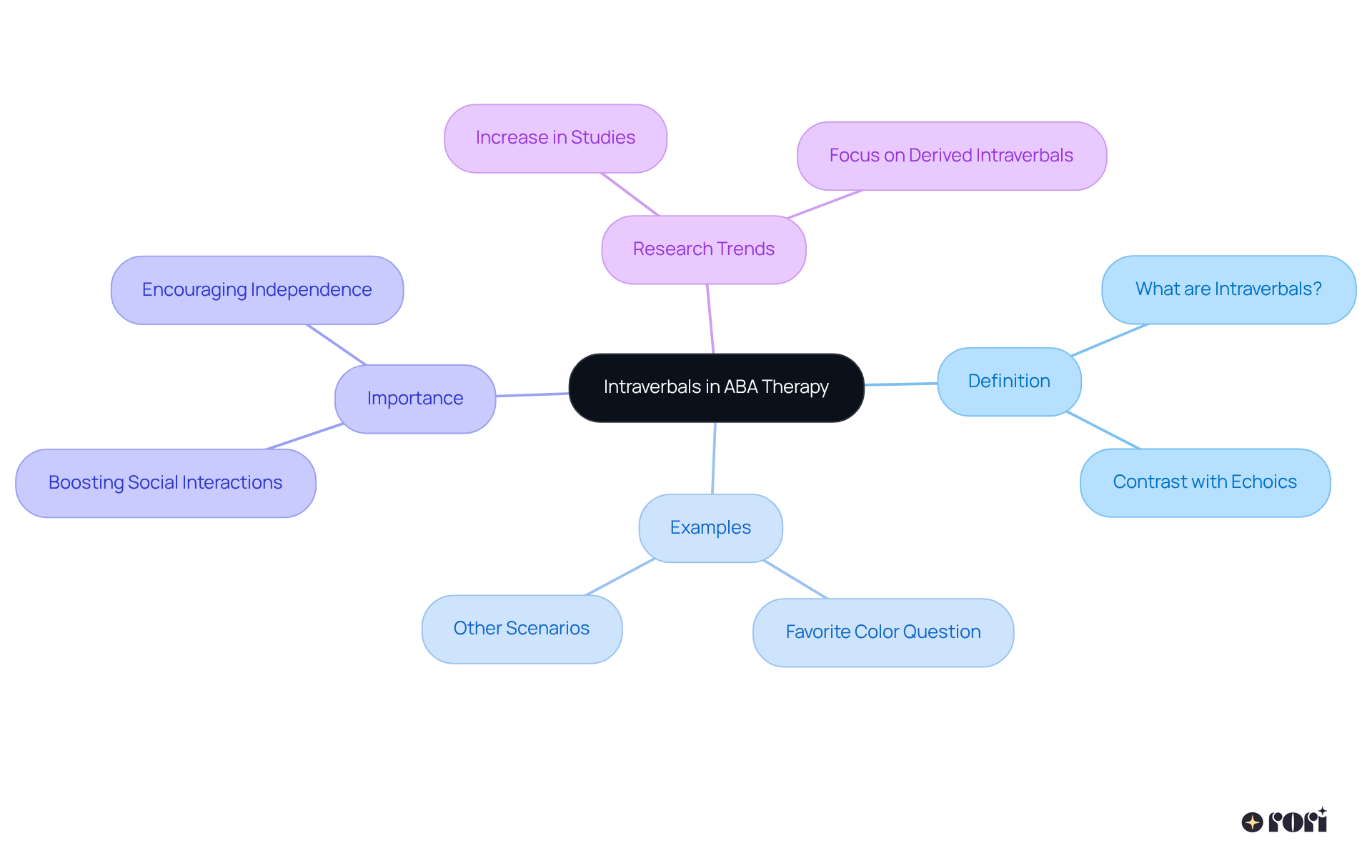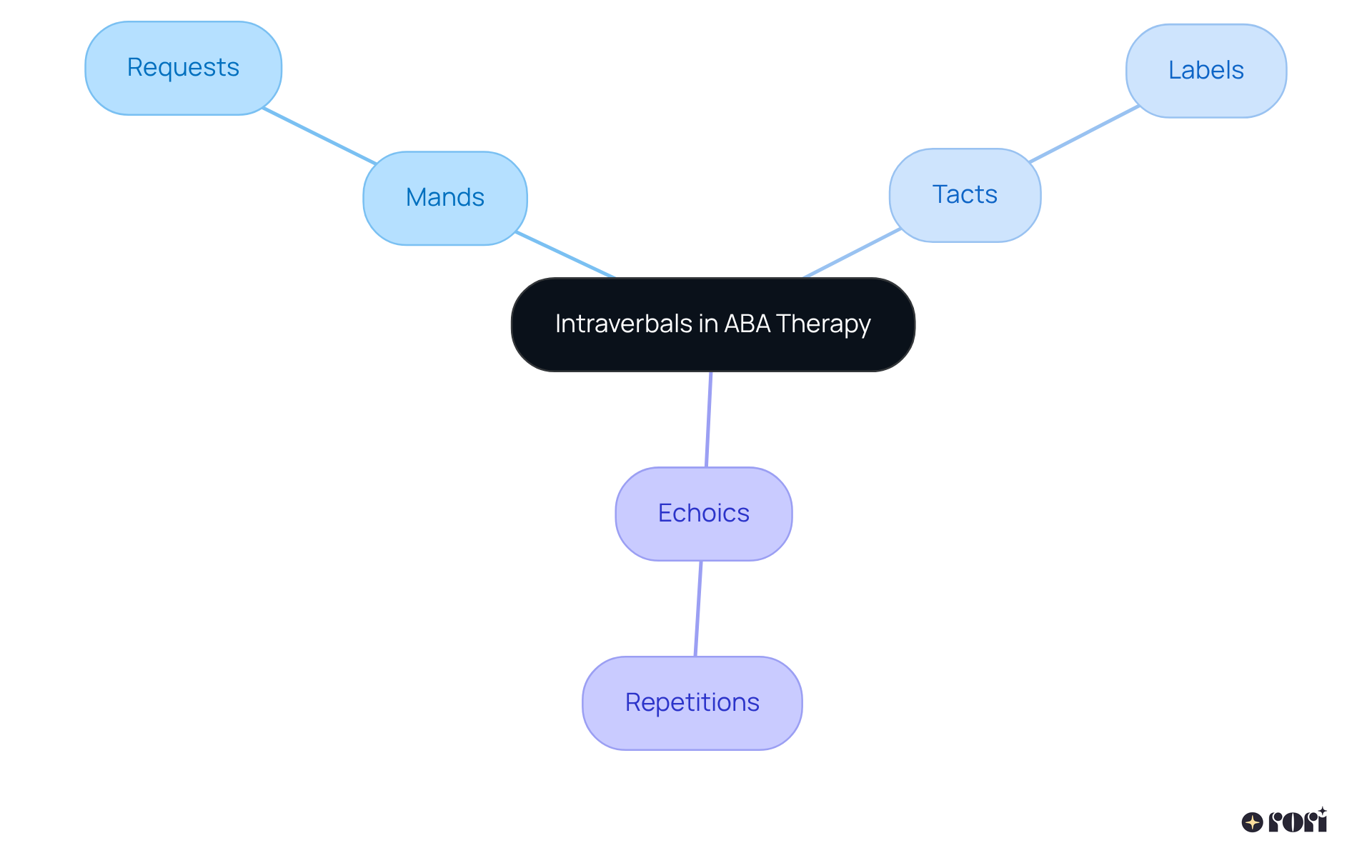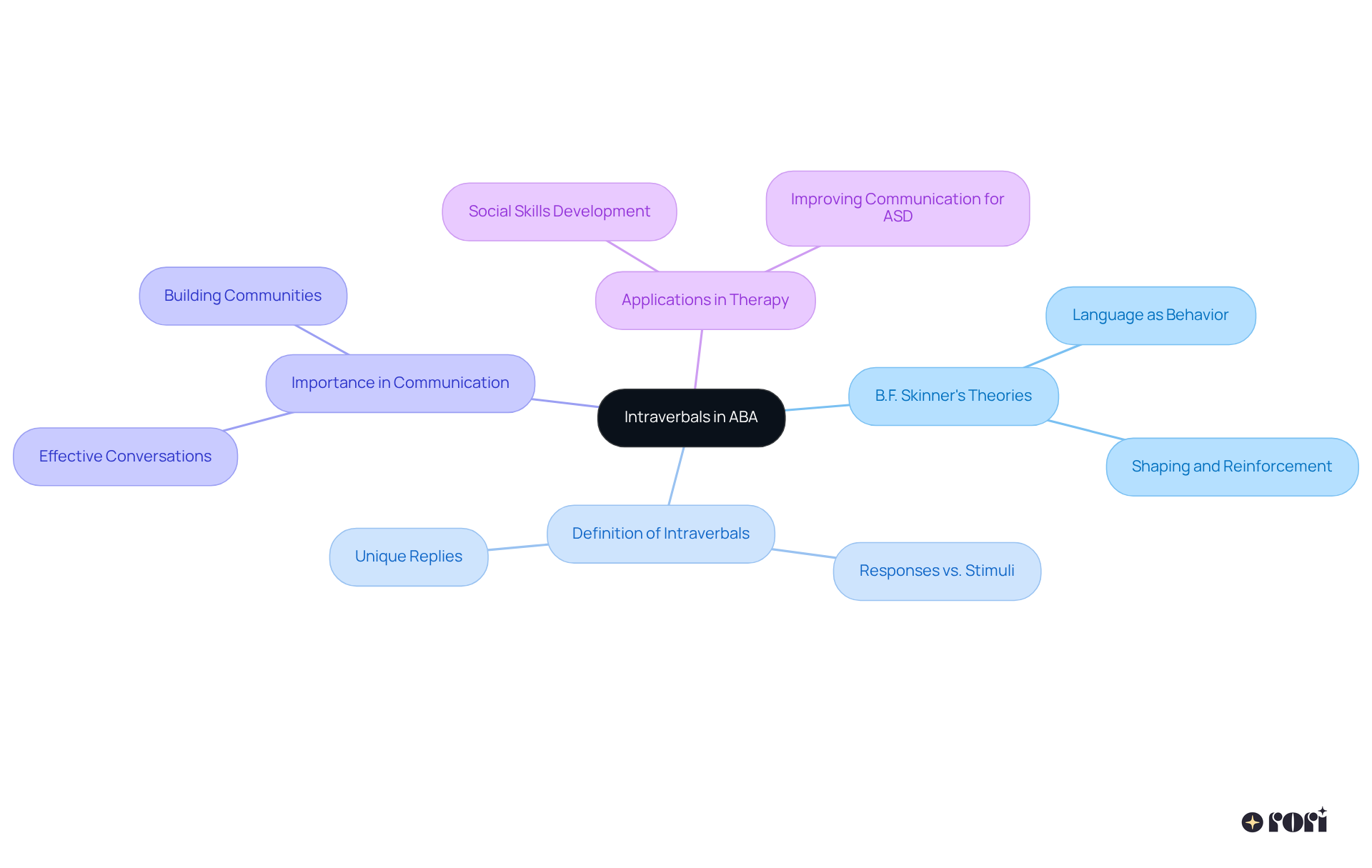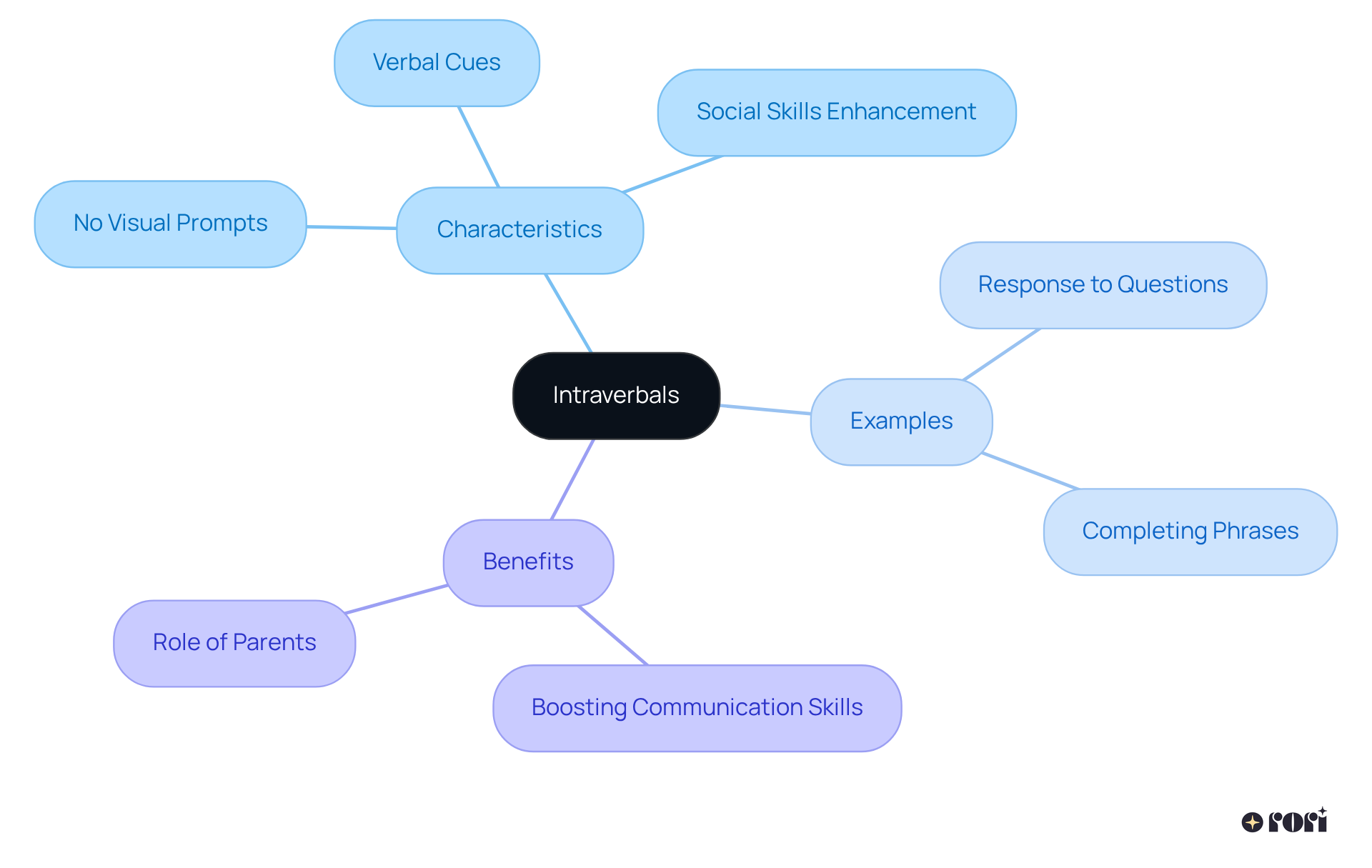Intraverbals in Applied Behavior Analysis (ABA) are fascinating! They refer to verbal responses to spoken cues that don’t rely on visual prompts. This aspect is crucial for meaningful communication and social interactions. For individuals with autism, mastering intraverbals can significantly enhance conversational skills and foster independence. By improving these skills, we can help boost overall communicative competence, making social interactions more fulfilling. Let’s explore this together!
Understanding the nuances of communication is so important, especially when it comes to Applied Behavior Analysis (ABA) therapy. At the heart of this therapeutic approach is the concept of intraverbals—those responses that come from verbal cues without any visual aids. This paves the way for meaningful interactions!
Mastering intraverbals not only boosts conversational skills but also encourages independence and social engagement, particularly for individuals on the autism spectrum. But have you ever wondered how these verbal exchanges truly shape the way individuals connect and communicate in their daily lives? Let’s explore this together!
In Applied Behavior Analysis (ABA) therapy, what is an intraverbal in ABA and why are they such an important part of how we communicate? They involve responding to someone else's spoken cues without relying on visual prompts. This way of interacting is key for having meaningful conversations and sharing information. For example, when someone asks, 'What is your favorite color?' a young person might say 'Blue.' This shows their ability to come up with a unique answer based on what they heard.
Unlike echoics, where you simply repeat what you hear, what is an intraverbal in ABA requires a person to think and formulate a fitting response. This makes them essential for social interactions and developing communication skills. Mastering intraverbals not only boosts conversational abilities but also encourages independence and social engagement—something really important for children with autism as they explore their world.
Recent studies reveal a remarkable increase in research on derived verbal operants over the last seventeen years. In fact, the number of studies focusing on derived intraverbals is nearly equal to those on all other operants combined! As Temple Grandin wisely said, 'I am different, not less.' This beautifully highlights the unique interaction needs and strengths of individuals with autism. Let’s explore this together, and remember, we’re here to help you every step of the way!

Understanding what is an intraverbal in ABA therapy is vital for helping individuals with autism enhance their communication and social skills. In the world of ABA, what is an intraverbal in ABA is considered a part of a broader verbal behavior approach that also includes:
By developing skills related to what is an intraverbal in ABA, young individuals can engage in meaningful conversations, respond to questions, and express their thoughts and feelings.
This is especially important for children on the autism spectrum, who often find spontaneous communication and social interactions challenging. When they learn what is an intraverbal in ABA by participating in intraverbal exchanges, it boosts their overall communicative competence and helps them integrate socially. So, let’s explore this together and see how these skills can make a difference in your child’s life!

Let’s dive into what is an intraverbal in ABA! This concept comes from B.F. Skinner's exploration of how we use language. He viewed language as a behavior that can be shaped and reinforced. Isn’t that fascinating? Skinner identified what is an intraverbal in ABA as responses that do not directly correspond to the stimuli that trigger them. So, it’s not just about repeating words; it’s about crafting unique replies that show understanding and context.
This idea really highlights how important our interactions and communication are in human behavior. Effective conversations are key to building our communities. This understanding of what is an intraverbal in ABA has significantly transformed ABA therapy methods, particularly in assisting young individuals with autism to navigate social situations through improved communication. It’s all about making those connections and fostering understanding. Let’s explore this together!

Intraverbals are fascinating! They occur without visual prompts, which means they require us to understand verbal cues and respond appropriately. Think about it: when someone asks, 'What do you enjoy doing at the park?' and a young person responds, 'I like to swing,' that’s a perfect example of intraverbal behavior. And what about when you fill in the blanks of a familiar song, like completing 'Twinkle, twinkle, little...' with 'star'? That’s another great illustration!
These interactions are so important for sparking lively conversations and enhancing social skills, especially for individuals with autism. Research shows that using intraverbal techniques consistently can really boost communication skills. In fact, studies have shown moderate to high effect sizes in language abilities after ABA interventions. By weaving these strategies into therapy, clinicians can help improve verbal fluency, conversational turn-taking, and expressive language. This ultimately allows young individuals to connect more meaningfully with others.
Plus, don’t underestimate the power of positive reinforcement! Complimenting a young learner for their correct answers can encourage them to participate even more and make these techniques even more effective. And let’s not forget about the vital role parents play in this journey. Parent-led ABA solutions can truly foster what is an intraverbal in aba, allowing you to actively engage in your child's communication development. Let’s explore this together! We’re here to help you every step of the way!

Intraverbals in Applied Behavior Analysis (ABA) are a vital part of effective communication, especially for individuals with autism. These verbal responses, which don’t depend on visual prompts, allow for meaningful interactions and promote social engagement. When caregivers and practitioners grasp the importance of intraverbals, they can help young individuals express their thoughts and feelings more freely.
Throughout our discussion, we’ve explored what intraverbals are, why they matter in ABA therapy, and how they’re grounded in B.F. Skinner's work. We’ve highlighted the differences between intraverbals and other verbal operants, the role of positive reinforcement in encouraging participation, and how consistent intraverbal training can transform language development. Together, these insights emphasize the need to nurture intraverbal skills to enhance social competence and independence.
Ultimately, embracing intraverbals in ABA therapy goes beyond just improving communication; it’s about fostering connections and creating a more inclusive environment for individuals with autism. By engaging in this process, parents, educators, and therapists can play a significant role in developing essential conversational skills. Let’s remember to celebrate each individual’s unique strengths while supporting their journey toward effective communication, helping them thrive in social settings and beyond!
What are intraverbals in ABA therapy?
Intraverbals in ABA therapy refer to responding to someone else's spoken cues without relying on visual prompts. They involve formulating a unique response based on what is heard, which is crucial for meaningful conversations and sharing information.
How do intraverbals differ from echoics?
Unlike echoics, where a person simply repeats what they hear, intraverbals require an individual to think and create a fitting response based on the spoken cue. This difference makes intraverbals essential for social interactions and communication skill development.
Why are intraverbals important for children with autism?
Mastering intraverbals enhances conversational abilities, promotes independence, and encourages social engagement, which are vital for children with autism as they explore their world.
What recent trends have been observed in research on intraverbals?
Recent studies indicate a significant increase in research on derived verbal operants over the last seventeen years, with the number of studies focusing on derived intraverbals nearly equal to those on all other operants combined.
How do intraverbals contribute to social interactions?
Intraverbals facilitate meaningful conversations by allowing individuals to engage and share information without visual prompts, thereby enhancing their social interaction skills.